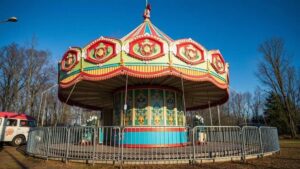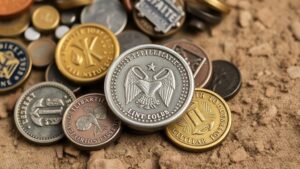Detecting for Silver Dollars and Half Dollars Near Historic Taverns
Detecting for Silver Dollars and Half Dollars Near Historic Taverns
The pursuit of treasure hunting has captivated individuals for centuries, and among the most sought-after coins are silver dollars and half dollars. These coins not only hold historical significance but can also yield considerable monetary value when unearthed. This article delves into the practice of detecting for these valuable coins near historic taverns, which often serve as ideal locations due to their rich histories and social gatherings from bygone eras.
The Historical Context of Taverns
Taverns have been pivotal gathering places since colonial America, serving as social, political, and economic hubs. often hosted important meetings and events, making them prime locations for potential lost treasures. For example, taverns played a crucial role during the Revolutionary War, acting as staging grounds for the Continental Armys strategizing and citizen gatherings.
According to research conducted by the American Historical Association, there were approximately 1,500 licensed taverns in New York City alone in the late 1700s, illustrating the prevalence of such establishments. Given that patrons would frequently handle cash, its not uncommon for coins to be lost or left behind in these bustling environments.
Types of Coins to Detect
When searching for silver dollars and half dollars near historic taverns, it is essential to understand the specific types of coins relevant to the time periods in which these venues were operational. Key coin types include:
- Seated Liberty Half Dollars (1839-1891): These coins are frequently found in areas frequented by travelers and patrons of historic taverns.
- Morgan Silver Dollars (1878-1904, 1921): Known for their iconic design, these coins were commonly used in transactions, especially in the American West.
- Barber Half Dollars (1892-1915): Often circulated in the late 19th and early 20th centuries, they are still found today in areas of historical significance.
Gathering Intelligence: Researching the Taverns History
Before embarking on a metal detecting expedition, conducting thorough research on the specific tavern and its historical context is crucial. Use local archives, libraries, and historical societies to uncover information such as:
- Original blueprints and property records
- Historical maps showing the taverns location over time
- Local newspaper archives detailing events held at the tavern
For example, researchers might find that the historic Green Dragon Tavern in Boston was a popular meeting spot for revolutionaries, indicating that coins may have been lost amidst the crowd.
Metal Detecting Techniques
Equipping oneself with appropriate metal detecting techniques is essential for success. Here are key strategies to consider:
- Choose the Right Equipment: A metal detector with a discrimination feature can help filter out unwanted metals, increasing the chances of finding silver coins.
- Targeted Areas: Focus on areas such as entryways, outdoor patios, or near old well sites where patrons might have gathered.
- Digging Techniques: Practice the plug method to ensure that the site remains undisturbed and to maximize potential for future finds.
Case Studies: Successful Discoveries
Several treasure hunters have recounted their successful discoveries near historic taverns. One notable case involved a collector in Virginia who unearthed a cache of 19th-century silver coins near an old tavern that served Union soldiers during the Civil War. The find included a mix of Seated Liberty Half Dollars and Morgan Silver Dollars, collectively valued at over $2,000.
Another instance was documented in Pennsylvania, where a pair of detectorists discovered a buried keg that held several Barber Half Dollars dating back to the early 1900s, linked to a tavern that had operated during Prohibition. This not only yielded coins but also artifacts that provided insight into that historical period.
Legal Considerations and Ethics
Before embarking on your search, it is crucial to understand the legal and ethical implications of metal detecting. Obtaining permission from property owners is a must, as trespassing laws can impose hefty fines. Also, many regions have regulations concerning the recovery of artifacts from historical sites. Educating oneself about these laws can ensure a lawful and respectful treasure-hunting experience.
Actionable Takeaways
To wrap up, detecting for silver dollars and half dollars near historic taverns can be both an educational and potentially lucrative endeavor. Here are actionable takeaways to enhance your treasure-hunting experience:
- Conduct thorough historical research on the taverns you plan to visit.
- Use quality metal detection equipment that enhances your search capability.
- Focus on areas with high foot traffic to increase your chances of finding lost coins.
- Always seek permission and adhere to local laws governing treasure hunting.
By employing these strategies, you can embrace the exciting world of metal detecting while uncovering pieces of history linked to Americas vibrant past.



